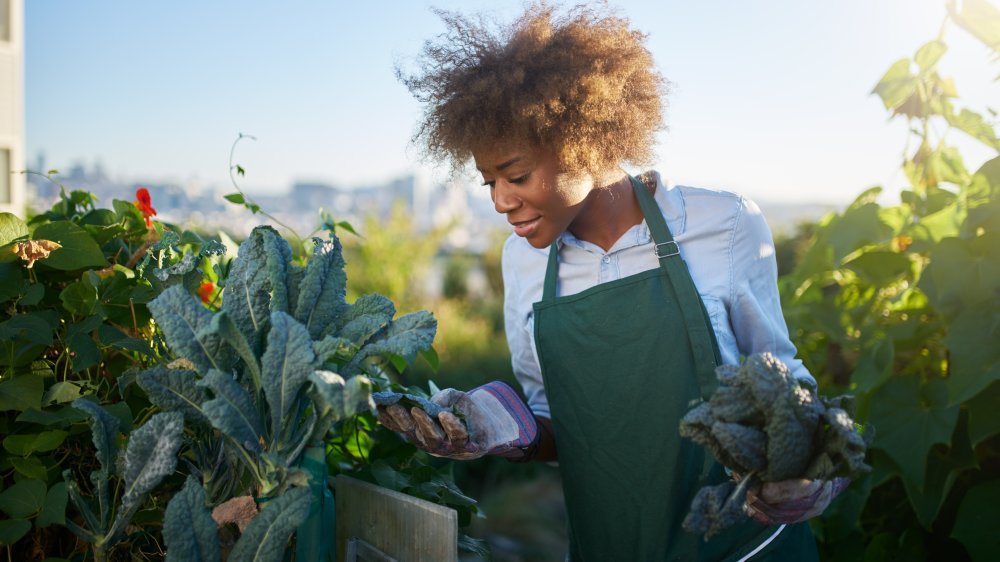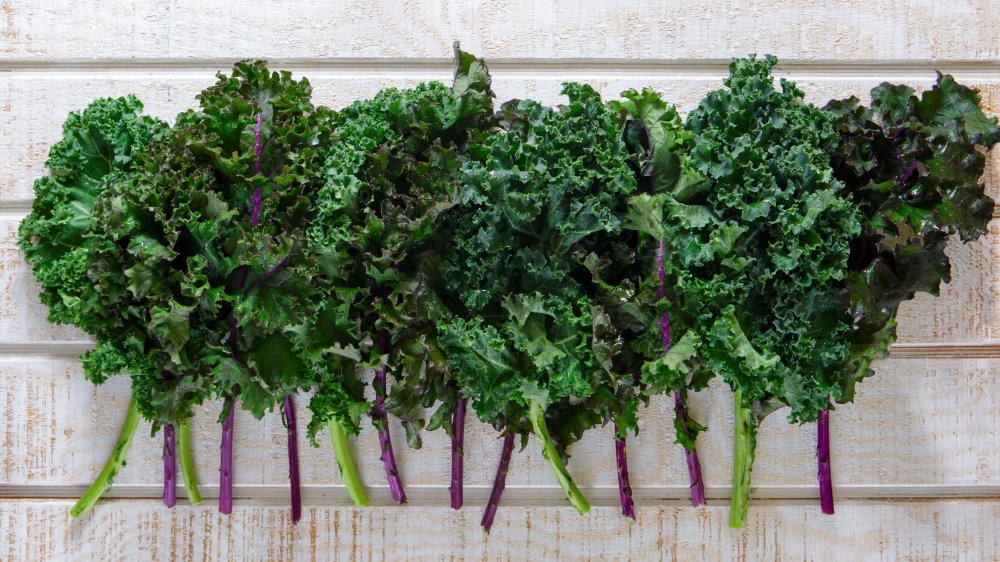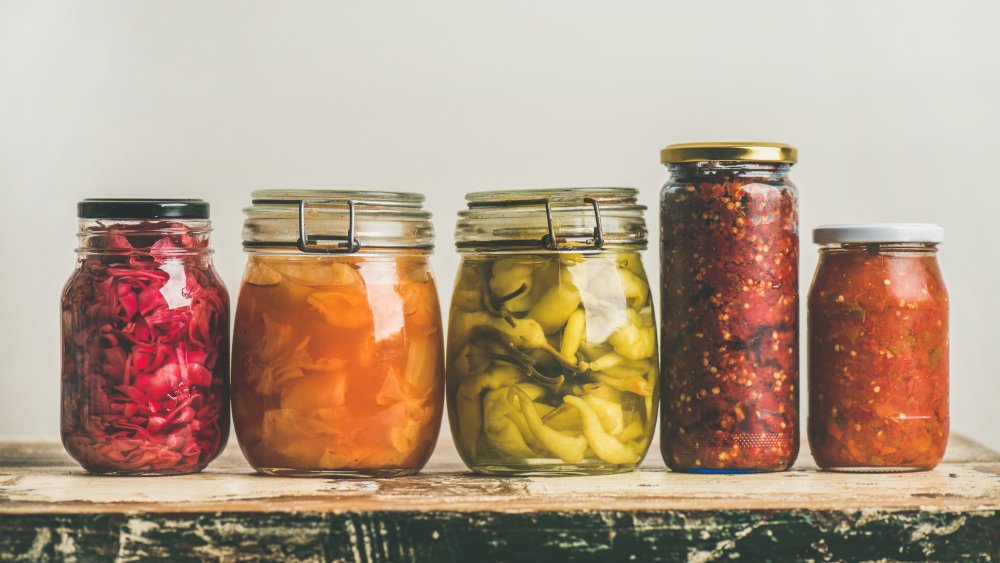You Shouldn't Throw Out Your Kale Stems. Here's Why
Almost every recipe holds the same advice when it comes to preparing kale: Cut or pull the leaves away from their thick, fibrous stems. Nine out of ten times, it's the leaves you want, so that you can simmer them, sauté them, grind them into pesto, or toss them into a warm grain salad. Kale has enjoyed so much versatility in the past few years that the leafy green has weaseled its way onto the grill, into the blender, and has made some lovely cameos in smoothies, paellas, and risottos (via Bon Appétit).
But once you've properly de-stemmed the vegetable, you might find yourself surrounded by a graveyard of green kale skeletons. Nixing the stems has a purpose: If you left those things in a raw salad, you'd be gnawing on them for years, and might run the risk of losing a tooth. Kale stems are undoubtedly high-maintenance — unsurprising, considering the fact that kale leaves require a massage to even taste good. That doesn't mean the stems should go straight into the garbage, though. Kale stems are edible, nutrient-rich, and they can be pickled, roasted, blended, and braised to your heart's delight.
Into the fire
We've established that the main problem with kale stems is their stalky, rigid texture. But how many of our favorite foods have that same texture when raw? Potatoes and beans are basically useless until we add some heat, and kale stems are no different. Cooks have experimented with sautéing them, letting them simmer, and frying them up, according to Food52. Miraculously, the team over at Huff Post managed to boil kale stems a few minutes before deep-frying them in batter. The result? A salty, starchy, crispy snack resembling french fries.
Stir-frying is another viable option. One cook, Kristen Stevens, swears by this method, tossing the finely chopped stems with sriracha, honey, and soy sauce. The result, she said, is something like "a mix between green beans and asparagus" (via The Endless Meal). The key, it seems, is to monitor your kale stems — whether you're pan-frying, roasting or stewing them — and find that lovely spot when the stems have started to lose their bitter crunch, and they've turned tender.
The power of pickles
Turns out, you can also transform your rough, stubborn kale stems without turning on the oven. Ambitious home cooks have tackled pickles from every angle — from carrots and onions, to watermelon rinds. If you're already getting experimental, why not throw in a few kale stems?
Pickling the tougher parts of leafy green vegetables will leave you with something savory, salty, and ultimately, palatable (via The Kitchn). And pickling is fairly simple: Thinly slice the stems before submerging them in your brine, which should contain vinegar, sugar, and salt at the very least. Depending on your personal preference, you can throw in garlic, sugar, jalapeño, or whatever you like, really.
If you really want to create a colorful assortment of pickles — while eliminating food waste — you can toss the chopped kale stems with those gorgeous, ruby-red stems that come from Swiss chard, to bring your pickle game to the next level (via Food52). By then, your kale stems, once destined for the garbage disposal, will definitely deserve a photoshoot.


